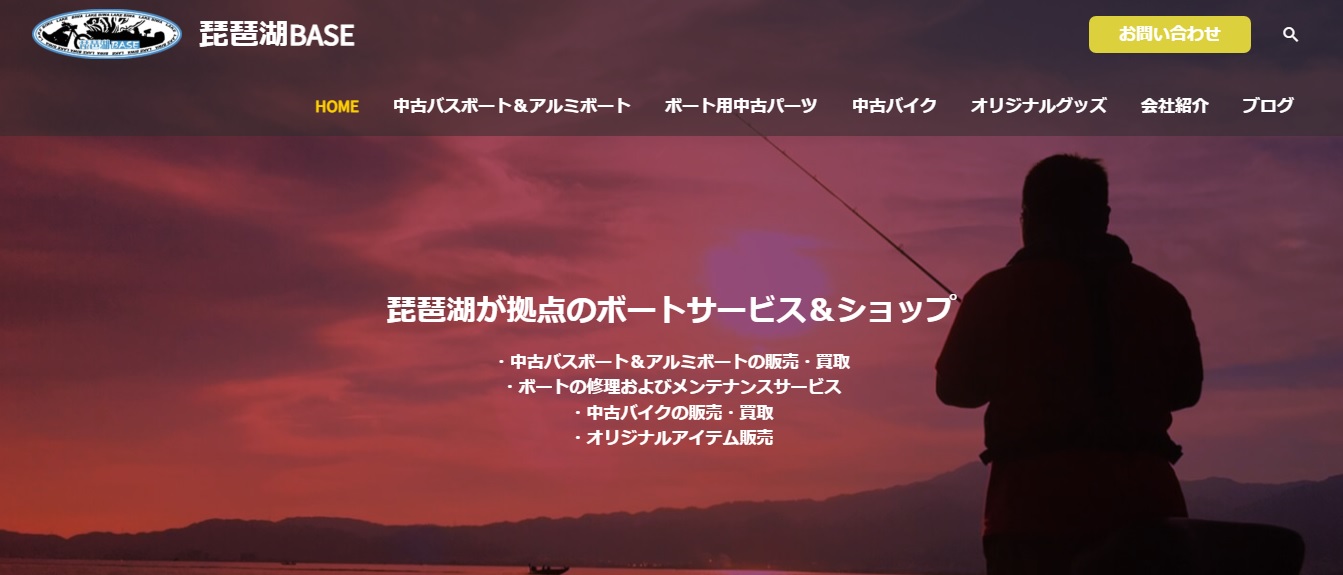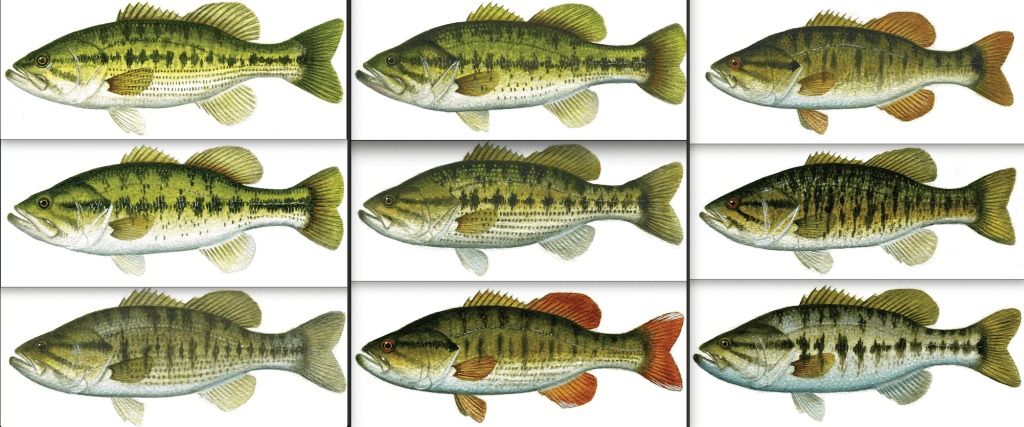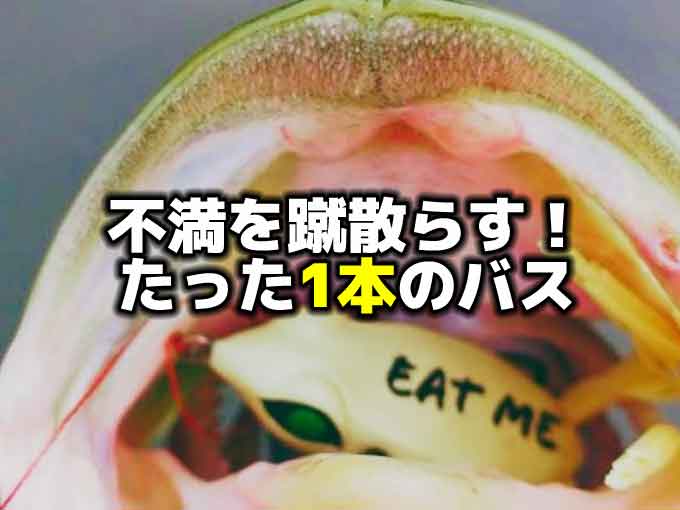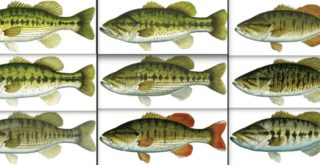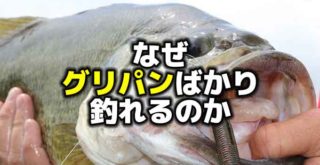「レッドアイバス」最も美しいバス!?
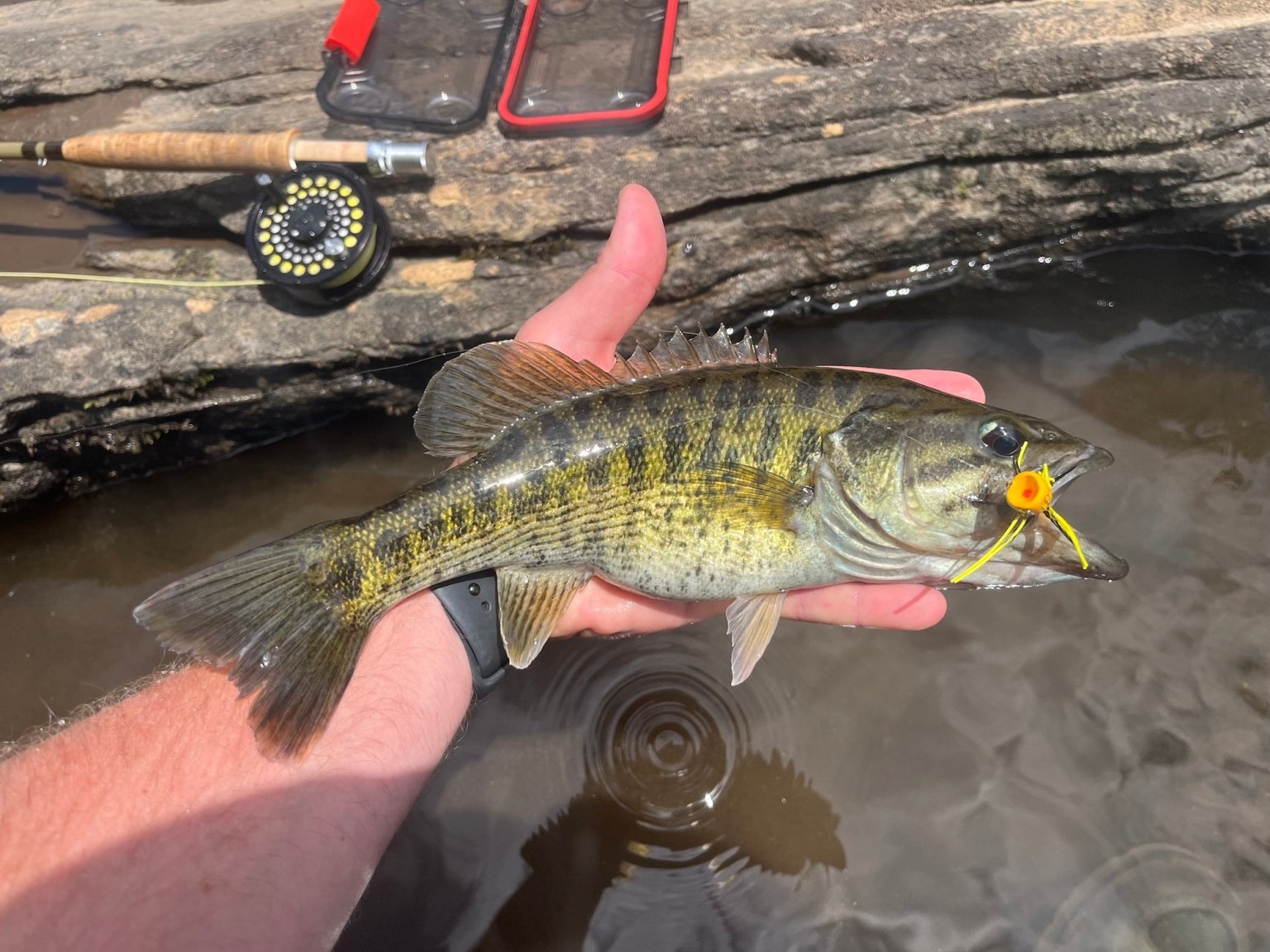
ブラックバスには様々な種類がいます。日本にはノーザンラージマウスバス、フロリダラージマウスバス、スモールマウスバスの3種が生息していますが、世界中ではなんと19種類にもなると言われています。ここではその種類に触れるのではなく、生物多様性の素晴らしさについて考えてみましょう。
こんにちは!店長の小山です!
私は子どものころから、近所の小川で釣りばかりしてました。フナやオイカワといった身近な魚釣りを楽しんでいたある日、変な魚がかかりました。平べったい顔、ウロコがなくぬるぬるとした身体、そして気味の悪いヒゲ。こんな魚は見たことがありませんでした。
しかし、その正体はわかっていました。そう、ナマズです。私が釣るのは初めてでしたが、魚図鑑や釣りの本ではおなじみの魚だったからです。でも、初めて見るナマズに興奮しました。自分が当たり前のように遊んできた小川に、思いがけないモンスターが生息していたことにびっくりしたからです(そのナマズは30センチもありませんでしたが)。
それまでも、私はその小川で何種類かの魚を釣っていました。ウグイ、コイ、アラメゴイ、ニシキゴイ、ニジマス、金魚…。このなんの変哲もない小川に、実は多くの生き物が住んでいます。
釣りを好きになったおかげで、家から5分という身近にある自然の中で、こんなに多くの生き物にそれぞれの生活があり、調和していることに気付くことができました。これを読んでいるあなたも、釣りを通じて出会った小さな命ひとつひとつに感動したことがあると思います。それこそが生物多様性の醍醐味だと思います。
この記事は、生物多様性の保護に取り組むアメリカの自然保護団体「The Nature Conservancy」のブログ「Cool Green Science」の記事で、編集者のマシュー・L・ミラー氏が、ブラックバスの仲間としては珍しい種「バートラムバス(レッドアイバス)」について語っています。
引用先
レッドアイバスそのものの美しさに触れることももちろんいいのですが、ミラー氏の最後の締めくくりかたに私は興味が引かれました。
ぜひ最後まで楽しんで読んでください。
バートラムバス(レッドアイバス)
Looking at the riffles ahead of me, I could be on a gorgeous trout stream. But the water’s a bit too warm and shoal lilies line the bank. I won’t find trout here, but the aesthetic is pretty much the same.
A pool of slack water lies above the riffle and I note a dimple in the water, perhaps a feeding fish. I launch my fly – a foam popper that loosely resembles a frog – near the spot. The popper hits with an indelicate splat. The fish doesn’t mind. The water boils around it and the foam frog disappears.
I strip my line and raise my rod, tight to a hard-fighting fish. It leaps and shakes, giving me a glimpse of its green, mottled sides. One more shake of its head and my line fell slack. I tugged hopefully but no luck.
It hardly mattered. Already this fish had become one of the favorite species I’ve encountered: the Bartram’s bass.
The Bass That Thinks It’s A Trout
Bass fishing is arguably the most popular form of fishing in the United States. And bass fishing can be one of life’s simple pleasures. Bass fishing also demonstrates that humans have a nearly infinite capacity to overcomplicate things.
A lot of the bass fishing scene today is a far cry from casting lures into a farm pond. It’s typified by fast and glittery boats, televised tournaments with logo-clad stars, plastic worms with names that sound like science fiction characters and warehouse-sized stores dedicated to the fish. It’s a nearly $3 billion-dollar-a-year industry.
That means the popular bass species – largemouth, smallmouth and spotted – get a lot of attention. It might seem the world of bass fishing has no mystery left. But that’s not quite true.
Native bass diversity extends beyond the most popular species. Swimming in waters in Alabama, Georgia, South Carolina and a bit of Tennessee are redeye bass. For many years, these fish were largely unnoticed by anglers.
They often are found in streams and smaller rivers. They don’t reach large sizes. Few studied them. In fact, when researchers started looking into redeye bass, they found genetic differences in the fish found in different drainages. Some have proposed that there are as many as 7 redeye species: the Tallapoosa, Chattahoochee, Altamaha, Coosa, Warrior, Cahaba and Bartram’s bass.
I’ve heard some describe the redeye as “the bass that thinks it’s a trout.”
I could see the parallels with the native cutthroat trout I love to pursue in the western United States. Like cutthroat trout, redeye bass have evolved to adapt to different drainages. They’re both often found in small, beautiful, wild streams. And both will hit flies on the surface.
Native Bass and Fly Rods
I pull off a South Carolina country road early on a May morning, plants still wet with dew. I’m meeting two staff with the South Carolina Department of Natural Resources, Will Mundhenke, aquatic education coordinator and Scott Keener, certified fishing instructor. I had met Will at a conference and he invited me to come fish for Bartram’s bass, a redeye variety found only in the Savannah River basin of northern Georgia and northwestern South Carolina.
As we string up fly rods, I quickly find that both Will and Scott are kindred spirits, and discussion ranges to native fish conservation, turkey hunting, outdoor ethics and freshwater biodiversity. Diversity that includes redeye bass.
There’s a growing angling subculture that specializes in fly fishing for redeye bass, something that makes sense to me but at times seems mystifying to the broader outdoor community. While Bartram’s bass can reach 12-14 inches, in most streams an 8-inch fish is a good-sized one.
“They may not be big, but they’re such a beautiful fish,” says Mundhenke. “And as you’ll see, they’re found in beautiful places. As an outdoor enthusiast, I’m interested in the overall experience.”
Me too. It becomes apparent we could stand by our vehicles talking outdoor topics all day, but we’re here to fish. We hike down to a stretch of a small river running through a private-land conservation easement. It is, as advertised, a postcard-worthy stretch of water, with rocky riffles and pools that just look fishy.
Will has warned me that water levels are cooler than he’d prefer for redeye bass – unlike trout, the bass are more likely to eat when the water warms up. And there has been some recent fluctuation in water levels.
Nonetheless, the river looks promising and I begin casting a foam fly called a popper. These flies float on the surface and, after casting, you jerk them back towards you making little ripples on the surface, imitating escaping prey.
Bartram’s bass usually attack so quickly that you don’t have to even bring the fly back. I cast out into a little pool, and within minutes see a splash at my fly. I’m tight to a fish, and as I reel in, see it’s a redbreast sunfish. The aggressiveness of this smaller species is always surprising and I love the sunfish’s bright colors. Not a Bartram’s bass, but it’s a fish for South Carolina (the 36th state where I’ve caught a fish, in case you’re wondering).
I can tell Will and Scott are a little antsy, eager for me to catch a Bartram’s bass. I know the feeling, the pressure of showing your guest good fishing. But I’m happy enough to be on this river and casting.
And a few minutes later, a whirlpool appears where my popper was. I give a strip of my fly line and lift my rod, and find I’m tight to a fish. A bigger fish than a sunfish. Will is immediately heading my way with a net. And then, I lose the fish. He seems more heartbroken than I was.
“That was a nice bass,” he says. “I hope that one doesn’t haunt us.”
It doesn’t. Despite worries about condition, the bass are hitting. It doesn’t take long before I have a small Bartram’s in the net.
I have a great appreciation for all fish, but I have to say, with its green barring, red eyes and white fin linings, this is the most charismatic bass I’ve ever seen.
The future of these bass may rest on other anglers sharing that sentiment. Because Bartram’s bass and many other redeye varieties face a perilous future.
The Threat of Bass in Buckets
There’s a real risk of losing much native bass diversity in the southeast. As might be expected, habitat loss and changing stream flows can play a role. But arguably the bigger threat is, well, other bass.
The popularity of fishing for largemouth, smallmouth and spotted bass described above means that these fishes have been moved far and wide to create new sport fisheries. I can catch largemouth and smallmouth a short distance from my home in Idaho, nearly 1,500 miles away from native bass range.
Here, non-native bass can eat salmon smolts and outcompete native trout.
In the Southeast, bass introductions can have even greater impacts. The Alabama bass – a species of spotted bass – lives naturally alongside some redeye species, but not all. This species has been moved around a lot, and when introduced to new watersheds, it often hybridizes with the native bass. Ditto for smallmouth bass.
While state agencies no longer stock non-native basses in the Southeast, many anglers still do this on their own. They might catch a big Alabama bass and think it would be cool to have a population in their local creek, filled with “only” small Bartram’s bas, and some may not even realize the fish are different species. The Alabama bass are hauled with a bucket to the new water, and they begin to hybridize the Bartram’s bass out of existence.
In many waters in redeye bass native range, it has become difficult to find redeyes that aren’t hybridized. There are still pure populations of all species, often protected by stream barriers (like waterfalls) or because they’re found in smaller waters. But they’re all only one bucket away from danger.
This “bucket biology”, as it’s often called, is not done out of malice. Many anglers simply don’t know.
Native fish advocates like Will and Scott are working to change that, and there are encouraging signs. Freshwater fish – even among biodiversity champions – are often out of sight, out of mind, so it can be difficult to generate support. Anglers may be causing problems for the fish, but they also can be part of the solution.
That’s why conservationists are thrilled to see a fly fishing subculture grow up around native redeye bass. This received a boost when bass biologist, writer and angler Matthew Robert Lewis penned the book, Fly Fishing for Redeye Bass, a compact volume filled with info on conservation and what makes these fish special. (Dr. Redeye, as he’s known to friends, will appear more in a forthcoming “50 Fish” feature).
Fishing takes many forms, and not everyone enjoys the realm of bass boats and tournaments. Many anglers found that they’d rather hike small streams in search of beautiful native fish. Enthusiasts seek out “redeye slams”, taking all 7 varieties of the bass. And they work towards educating other anglers about these fish and why they deserve conservation attention.
The Redeye Special
The stretch of water we’re fishing today has been spared the introduction of Alabama bass. Surveys by South Carolina DNR have found these fish to be genetically pure.In the afternoon, we head to a public stretch of water, but no other anglers are around. A large, ratty teddy bear sits by the river, a strange landmark that’s apparently been there for years. But, creepy stuffy aside, the river is again pristine with long, deep pools and burbling riffles.
It doesn’t take long to find the Bartram’s bass. A cast into a deep pool sends a nice fish rocketing out of the depths, smashing into my fly. It doesn’t get hooked, but just seeing the fish leap out of the water is enough. I appreciate freshwater biodiversity for its own sake. But I’m also an angler to my core, and I love the exciting takes of these fish hitting the fly.
The afternoon continues like this. I lose plenty but also catch some nice Bartram’s bass as do my companions. We’re lost in the trance of the river, casting poppers over and over, with enough fish to keep it exciting.
The rivers of the Southeast are the most diverse in North America and much of that diversity still goes largely unnoticed. Even bass, among the most popular fishes on the planet. As I wade along the South Carolina river, I can only hope more anglers appreciate these brilliant little fish and the places they’re found. Their future depends on it.
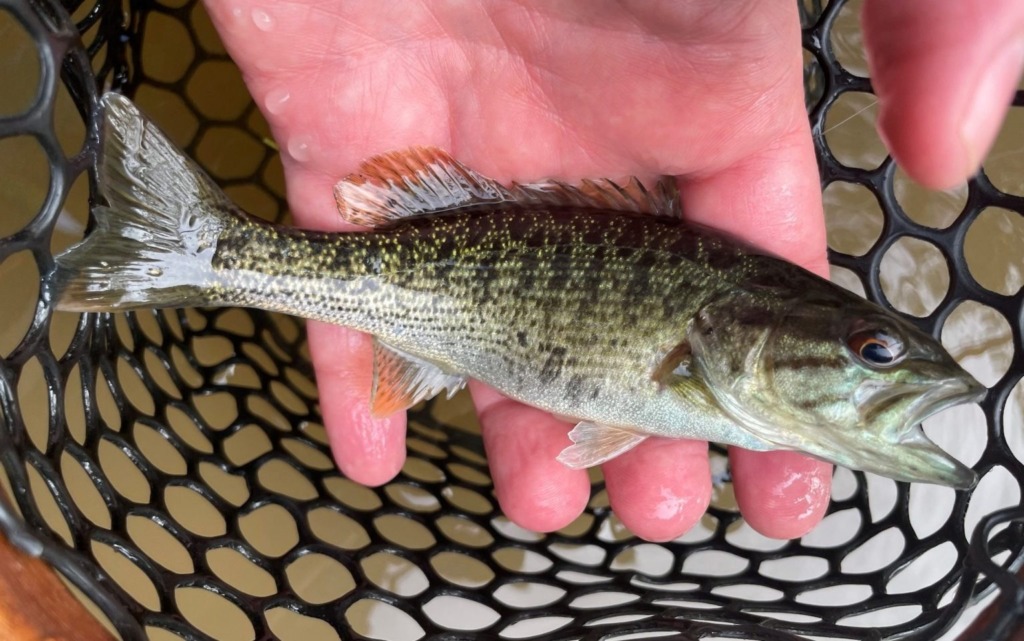
目の前の風景を見ると、トラウトの釣り場にいるように見えるかもしれません。 しかし、水温は高く、岸辺にはユリの花が並んでいます。 ここにはトラウトはいませんが、見た目の美しさは似ています。
川を見ると、流れがゆるんでいる場所があり、おそらく魚はここで捕食すると思われます。 私はフライ(カエルに似たフォームポッパー)をその近くへキャストします。 ポッパーが変な音をたてて着水しますが、魚は気にしません。 次の瞬間、水面が破裂し、ポッパーが消えます。
私はラインを張り、激しいファイトをする魚に対してロッドを上げます。 ジャンプや横走りしたとき、緑の模様のある側面が見えました。 その魚がもう一度頭を振ったとき、ラインはフッと軽くなりました。 期待していたのですが、運がなかったようです。
そんなことはどうでもよかったのです。 その魚はすでに、私がこれまで出会った魚の中で最もお気に入りの魚のひとつになっているからです。バートラムバスです。
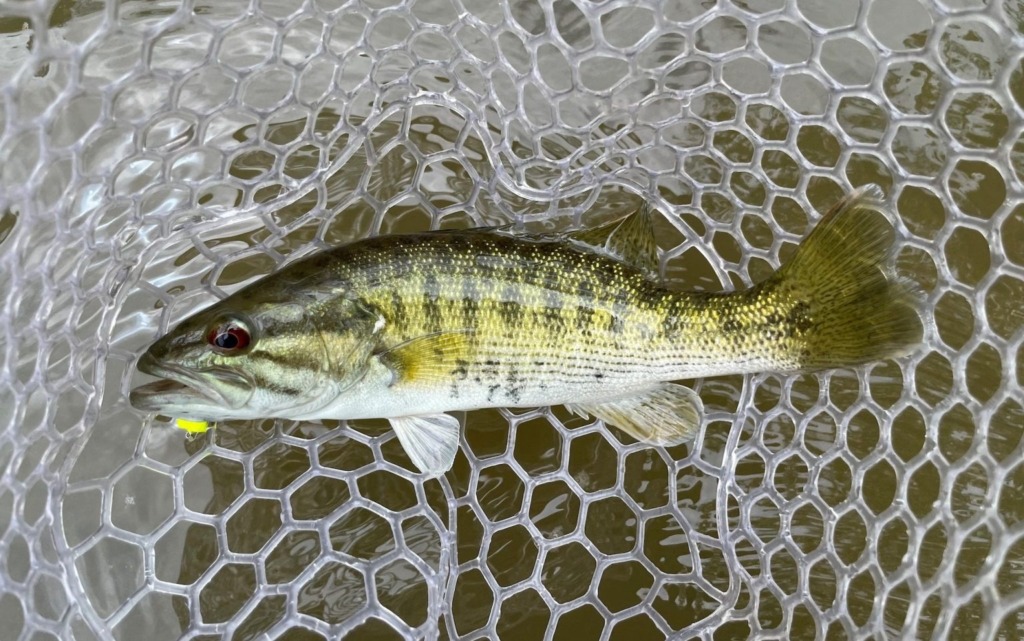
トラウトのようなバス
バス釣りはおそらくアメリカで最も人気のある釣りです。 そして、バス釣りは人生の純粋な楽しみの 1 つとなります。 バス釣りはまた、人間に物事を複雑に考えすぎてしまうという性質も持っています。
最近のバス釣りというと、近所の池でルアーをキャストするのとは程遠いものです。 その代表例は、豪華なバスボート、ロゴ入りのシャツを着たスター選手が出演するテレビトーナメント、SF映画の登場人物のような名前のワーム、そしてバス釣り専門の超大型店舗。 年間約 30 億ドルの産業です。
これは、人気のバス種(ラージマウスバス、スモールマウスバス、スポッテッドバス)が多くの注目を集めているということです。 バスフィッシングの世界にはもう知らないことはないように思えます。 しかし、そんなことはありません。
在来バスの多様性はそれらの人気のある種以外にも広がっています。 アラバマ州、ジョージア州、サウスカロライナ州、そしてテネシー州の一部の地域に生息するレッドアイバス。 長年にわたり、このバスはアングラーからはほとんど気付かれていませんでした。
小さな川や渓流でよく見られ、サイズは大きくなりません。 レッドアイバスを研究した人はほとんどいませんでしたが、研究者がレッドアイバスを調査し始めたとき、異なる水系にいるレッドアイバスに遺伝子の違いを発見しました。
レッドアイバスだけでも、タラプーサ、チャタフーチー、アルタマハ、クーサ、ウォリアー、カハバ、バートラムバスの 7 種ほどいると主張する人もいます。
レッドアイバスを「自分をトラウトだと思いこんでいるバス」と表わす人もいると聞いたことがあります。
私がアメリカ西部で好んで追いかけている在来のカットスロート・トラウトとの類似点があります。 カットスロートトラウトと同様に、レッドアイバスもさまざまな水系に適応するように進化してきました。 どちらも小さくて美しい自然の川でよく見られます。 そして両方とも、水面のフライに食ってきます。
在来バスとフライロッド
ある5月の早朝、草木がまだ露に濡れている中、私はサウスカロライナ州の田舎道を出発しました。 サウスカロライナ州天然資源局の職員2名、水生教育コーディネーターのウィル・ムンデンケ氏とフィッシュインストラクターのスコット・キーナー氏に会うためです。
ウィルとはカンファレンスで会ったことがあり、ジョージア州北部とサウスカロライナ州北西部のサバンナ川流域にのみ生息するレッドアイバスの1種であるバートラムバスを釣りに来ないかと誘ってくれたのです。
フライロッドを構えると、ウィルとスコットがもう意気投合していることがわかり、話は在来魚の保護から、七面鳥のハンティング、アウトドア倫理、淡水の生物多様性にまで及んでいます。 もちろん多様性の話はレッドアイバスも含んでいます。
レッドアイバスを狙うフライフィッシングに特化した釣りのサブカルチャーも成長しています。これは私にとっては当然のことですが、一般的な釣りファンにとっては理解できないかもしれません。バートラムバスは大きいものは35センチくらいになることもありますが、ほとんどの渓流ではよくて20センチといったところだからです。
「大きくはないかもしれないけど、とても美しい魚」とムンデンケ氏は言います。 「そして見てくれ。この魚は美しい場所で見ることができる。 私はアウトドア愛好家として、この総合的な体験が楽しいんだよ。」
その通りだと思います。 車のそばで一日中アウトドアの話をしてもまったく問題はないのですが、私たちは釣りをするためにここに来ました。 私たちは、保護地域の中を流れる小さな川までハイキングで向かいます。 ムンデンケ氏が言う通り、ここは絵はがきのような景色で、岩だらけの瀬や淵があり、いかにも魚がいそうです。
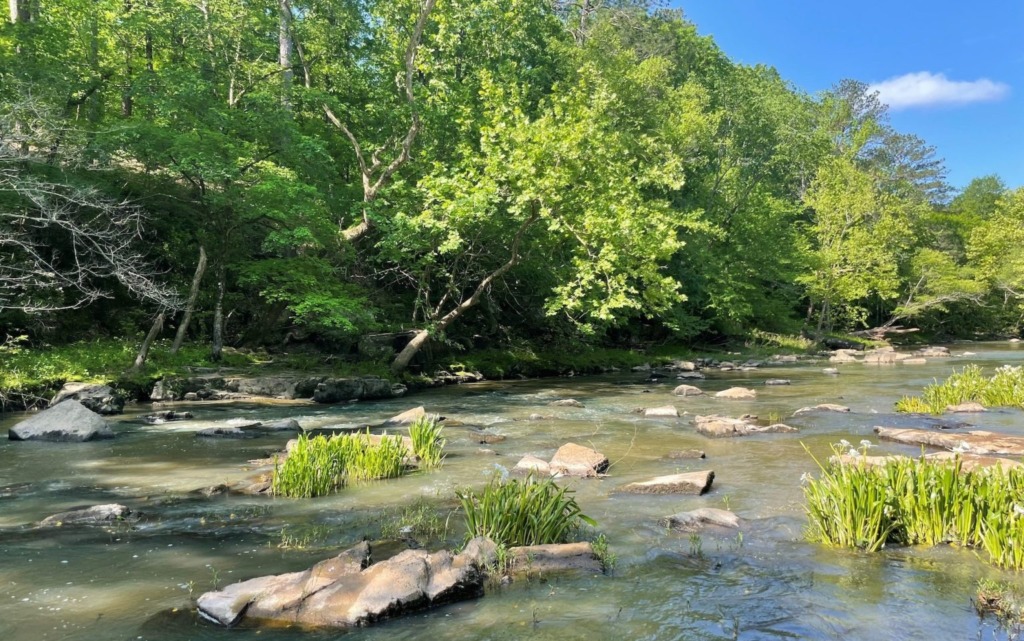
ウィルは、水位からするとレッドアイバスの適水温よりも低そうだと言います。トラウトと違い、バスは水温が上がると餌を食べる可能性が高くなります。 そして水位に変動があったのは最近のようです。
それでも、川はいい感じに見えるので、ポッパーと呼ばれるフォームフライをキャストし始めます。 このフライは水面に浮かび、キャストした後、逃げる獲物を模倣して、水面に小さな波紋を作りながらフライを手前にリトリーブします。
バートラムバスは通常なら、フライをリトリーブする必要もないほどすぐにアタックしてきます。 私が小さな淵にキャストすると、数分もしないうちにフライが爆発するのが見えました。 フッキングが上手くいったので糸を巻くと、それはレッドブレストサンフィッシュでした。 この小さな種の攻撃性にはいつも驚かされますが、私はサンフィッシュの明るい色が大好きです。 バートラムバスではありませんが、サウスカロライナ州固有の魚です。
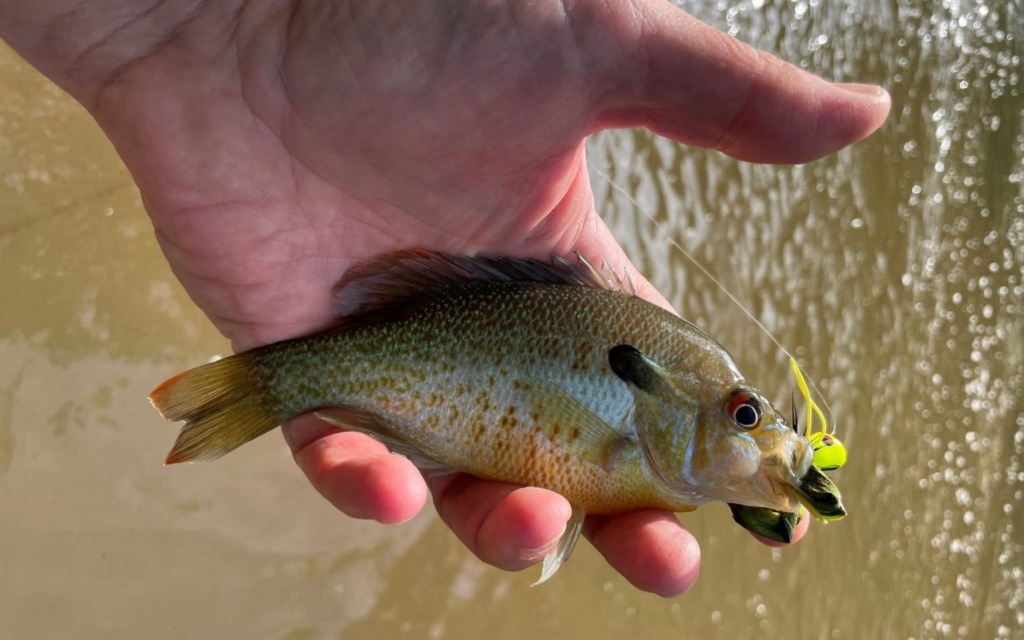
ウィルとスコットは、私がバートラムバスを釣るのを待っているようです。 彼らに良いところを見せなければならないという気持ちやプレッシャーは確かにありますが、この川に来て釣りができるだけで充分幸せだったりもします。
そして数分後、私のポッパーがまた消えました。 ラインを少し張ってロッドを持ち上げると、魚が掛かりました。 サンフィッシュより大きい。 ウィルはすぐに網を持ってこちらに向かってきます。 そしてバラしてしまう…。 彼は私よりも悲しんでいるようです。
「素晴らしいバスだったけどね。 もうバラさないでくれよな。」
いやいや、タフコンディションのようだけどバスはヒットしてきた。 バートラムバスがネットに入るのにそれほど時間はかからないだろう。
私はすべての魚が大好きですが、緑色のシマ模様、赤い目、そして白い胸ビレをもつこのバスは、私がこれまで見た中で最もカリスマ性のあるバスだと言わざるを得ません。
このバスの将来は、多くのアングラーがこの気持ちに共感してくれるかどうかにかかっているかもしれません。 なぜなら、バートラムバスや他の多くのレッドアイバス種は、絶滅の危機に直面しているからです。
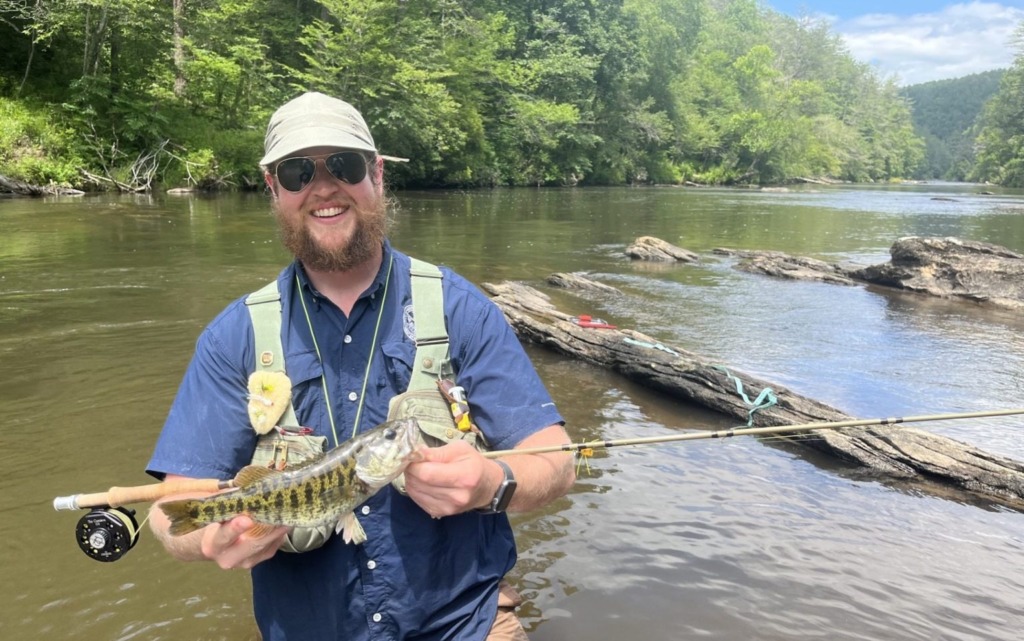
バケツの中のバスの脅威
アメリカ南東部では在来バスの多様性が失われる危険性があります。 川の流れの変化による生息地の喪失が影響を及ぼしている可能性があります。 しかし、もっと大きな脅威は、他の種のバスです。
上で説明したラージマウスバス、スモールマウスバス、スポッテッドバスの釣りの人気は、新しいスポーツフィッシングの場を作るために生息範囲が広がっていることを意味します。 私のアイダホ州の自宅から少し離れた場所、固有種のバスの生息域から約2400キロ離れた場所で、ラージとスモールマウスを釣ることができます。
ここでは、外来種のバスがサケの子供を食べ、在来のトラウトと競合が起きています。
南東部では、バスが入ってくることでさらに大きな影響を与える可能性があります。 スポッテッドバスの一種であるアラバマバスは、一部のレッドアイバス種と自然に共存していますが、すべてではありません。 この種は頻繁に移動しており、新しい水域に入ってくると、在来のバスと交雑することがよくあります。 スモールマウスバスについても同様です。
州政府機関は現在は南東部で外来バスの放流を行っていないのですが、多くのアングラーは今でも自分たちでバスを放流しています。 大きなアラバマバスを釣り上げ、レッドアイバスとまちがえて良かれと思って地元の小川に放流してしまう可能性もあります。 バケツで運び込まれたアラバマバスは、バートラムバスと交配し始めます。
レッドアイバスの生息域の多くでは、交雑していないレッドアイバスを見つけるのが困難になっています。 純粋な種もまだ存在しており、だいたいは川にある障壁(滝など)で保護されているか、かなり狭い水域で見られています。 しかし、それらもすべてバケツ 1 つで危険にさらされます。
この「バケツの生物学」は、よく言われるような、悪意があって行われるものではありません。 多くの釣り人は単純に知らないだけです。
ウィル氏やスコット氏のような在来魚の擁護者たちはこの状況を変えようと取り組んでおり、明るい兆候も見られています。 淡水魚は、たとえ生物多様性の擁護者であっても、目に見えず、関心を持たれないことが多いため、支援を集めるのは難しい場合があります。 釣り人は魚に問題を引き起こしているかもしれませんが、解決策の一因になることもあります。
だからこそ、自然保護活動家たちは、在来種のレッドアイバスを中心にフライフィッシングのサブカルチャーが成長することを喜んでいるのです。 この考えは、バス生物学者であり作家、そして釣り人のマシュー・ロバート・ルイスが『レッドアイバスのためのフライフィッシング』という本を出版したことも後押しになります。この本には、保護とこの魚の特別な理由に関する情報が詰まったコンパクトな一冊です。
釣りにはさまざまな形があり、誰もがバスボートやトーナメントで楽しんでいるわけではありません。 釣り人によっては、美しい在来魚を求めて小さな川をハイキングすることを好みます。 愛好家は、7 種類のレッドアイバスすべてを釣る「レッドアイ スラム」を目指します。 そして彼らは、他の釣り人にこの魚について語り、なぜそれらが保護に値するのかを伝えることに取り組んでいます。
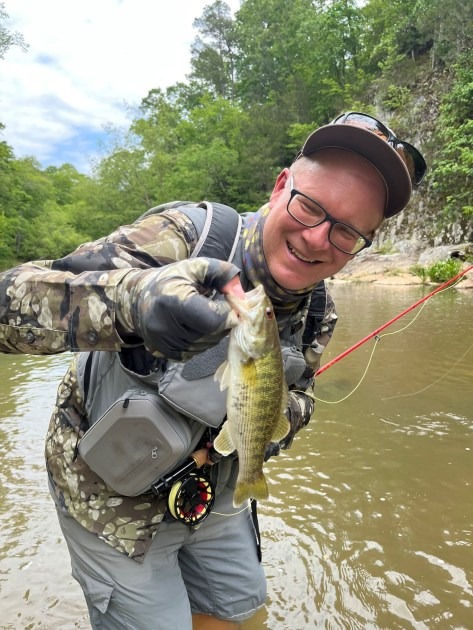
レッドアイ・スペシャル
現在、私たちが釣りをしている水域では、アラバマバスの侵入を免れています。 サウスカロライナDNRによる調査では、これらの魚は遺伝的に純血種であることが判明しています。
午後、私たちは公共の水辺に向かいましたが、周りに他の釣り人はいません。 ボロボロの大きなテディベアが川のほとりに置いてあり、何年も前からそこにあるようです。 そんな不気味さはさておき、川は長くて深い淵とせせらぎがあり、自然のままになっています。
バートラムバスを釣るのにそれほど時間はかかりません。 深い淵にキャストすると、素晴らしい魚がディープからロケットのように飛び出してきて、私のフライにアタックします。 フッキングしなくても、魚が水面から飛び出す様子を見るだけで十分です。 私は淡水の生物多様性それ自体を高く評価しています。 しかし、私は根っからの釣り人でもあり、フライにバイトする魚のエキサイティングな瞬間が大好きです。
午後もこんな感じで続きます。 私はたくさんバラしましたが、仲間たちと同じように素晴らしいバートラムバスを釣りました。 私たちは川に夢中になり、ポッパーを何度もキャストし、楽しい釣りを続けます。
南東部の川はアメリカで最も多様性があり、その多様性の多くはまだほとんど注目されていません。 地球上で最も人気のある魚のひとつであるバスですら、です。 サウスカロライナ川沿いを歩きながら、より多くの釣り人がこの素晴らしい小さな魚とその生息地を理解してくれることを願うばかりです。 彼らの将来はそれにかかっています。
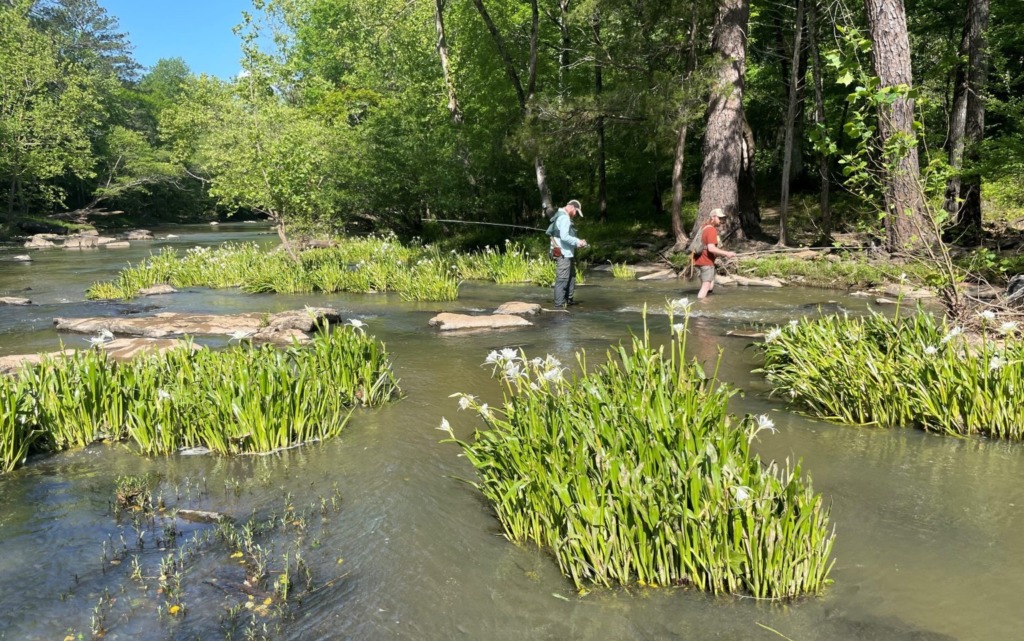
この文章から感じ取れるのは、アメリカ南東部の小河川にはまだ発見されていない魚の多様性があるということです。バートラムバスというバスはその一例として、トラウトのような性質を持っているということでした。
マシューさんのこの魚への思い入れがよく伝わってきましたよね。
フライフィッシングでの出会いから始まり、景色の美しさ、そしてその独特のビジュアルまで、この魚の魅力について細かく書かれています。
私も以前は大きなバスばかりを求めていたころがありましたが、この文を読んであらためて共感できる部分が多かったです。
そして、釣りの感覚的な部分もよく表現されていますよね。フライをキャストし、反応した魚が飛び出す瞬間がリアルに描かれているので、読んでいるだけでその興奮に共感してしまいます。
一方で、問題点として、在来種であるこうした魚たちが、他から持ち込まれた外来種のバス(日本人からするとちょっとややこしい)との競合や交配によって絶滅の危機にさらされていると書かれています。
釣り人の無自覚な行動が、生物多様性を奪っているかのような…。この点について、保護の大切さを訴えかけているところがこの記事の重要なポイントだと思います。
私自身も含め、釣り人は魚を楽しむあまり、生態系への影響を考えずに行動することが少なくありません。問題意識を持つことが大切だと教えられる部分でした。
最後に、レッドアイバスへの関心が高まることが、結果として保護につながっていくという期待が書かれていました。
確かに、釣りの対象魚として人気が上がることが、保護活動の追い風になることはあると思います。
楽しみながら種の存続に貢献できるというのは、釣り人として理想的ですよね。
ただし、締めの言葉「彼らの将来はそれにかかっています。」という文。「彼ら」というのは、果たしてレッドアイバスのことなのか、それともアングラーのことなのか。
あなたはどう思いましたか?
それでは、また。
毎度ありがとうございます!
関連記事:
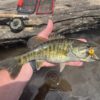
 https://blog.nature.org/2023/09/11/50-fish-50-states-bartram...
https://blog.nature.org/2023/09/11/50-fish-50-states-bartram...





 https://nojiriko-fishing.net/19_types_black_bass/
https://nojiriko-fishing.net/19_types_black_bass/